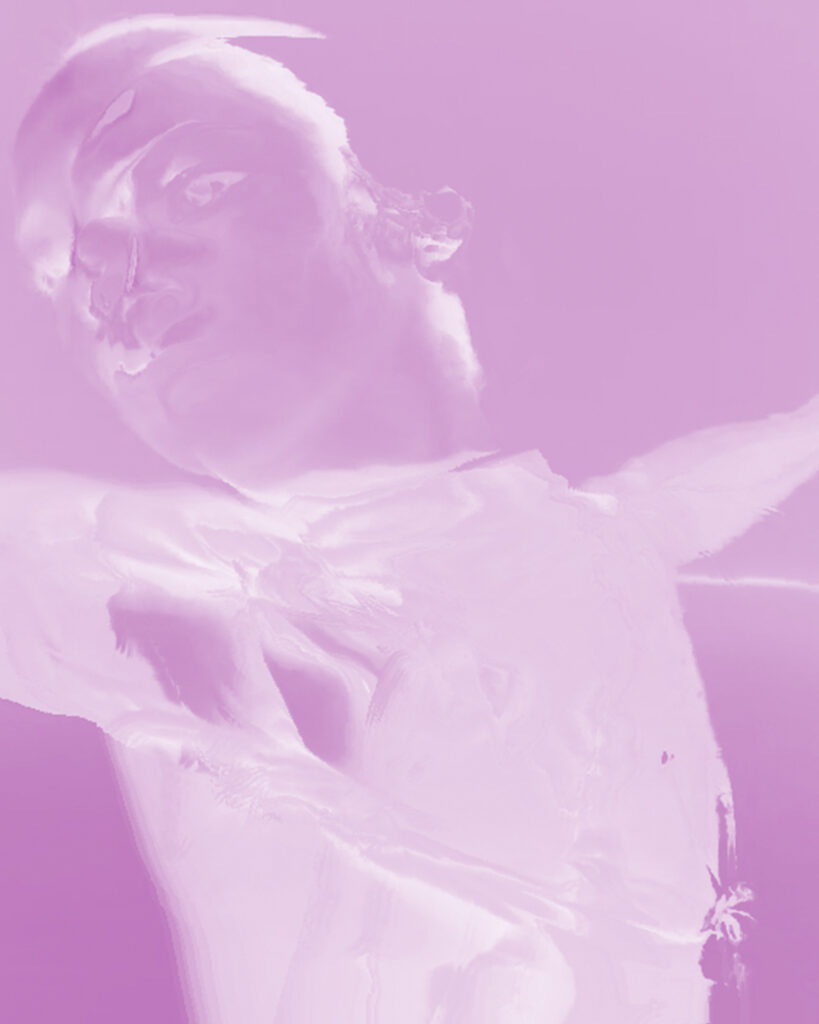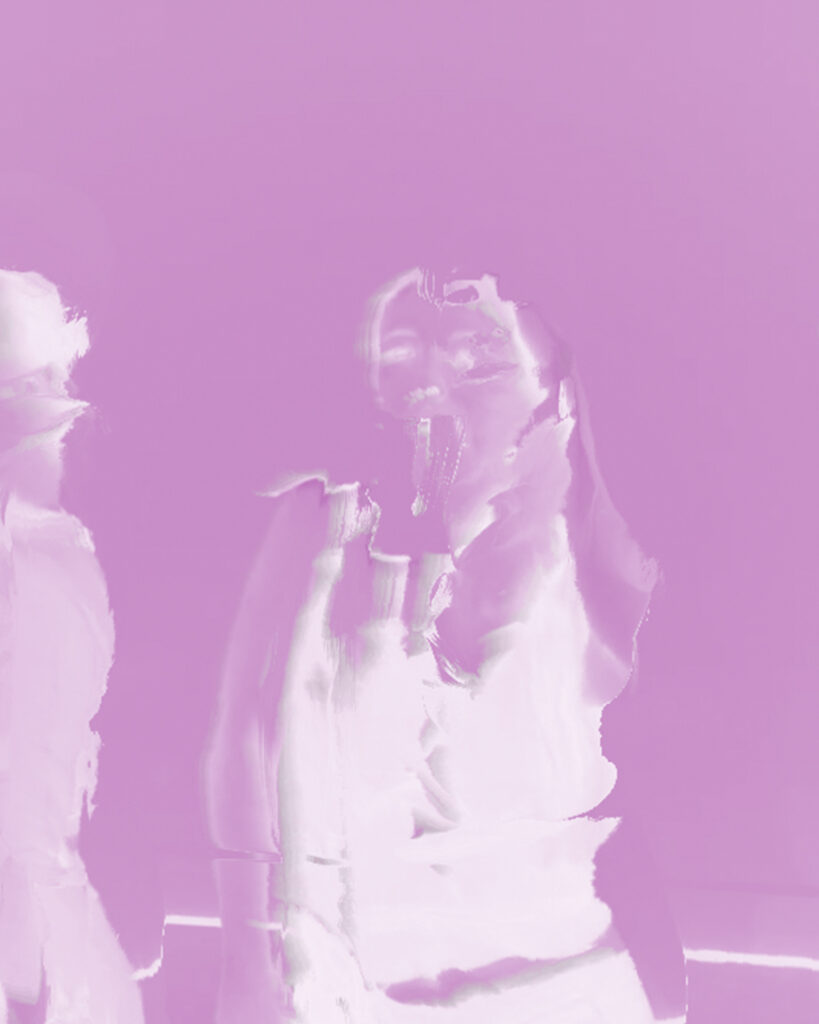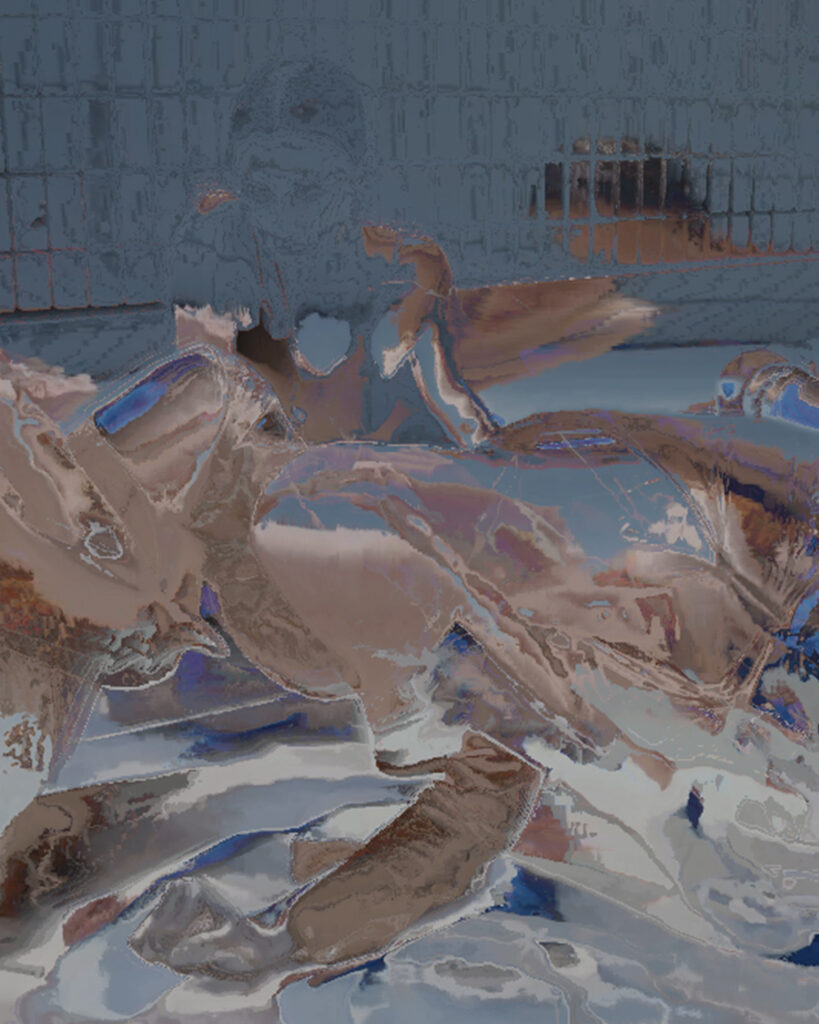Dance is a form of silent expression, but one that is scarcely silent. The relationship between movement and music is symbiotic. Sometimes it is harmonious: gesture and sound synchronised, belonging together. Other times it is reactionary—one is compelled to answer the other. In the context of Electronic Beats‘ The Cube, a new dimension is added—enabling a digital exploration of the intent and evolution behind performative art.
For choreographer, curator, and director Franka Marlene Foth, movement begins with sound. The vibration of a bass or the hum of a specific note can conjure a composition instantaneously—an image of bodily formations, then translated through dance.
But the synergy between conceptual dance and club culture exceeds electronic music.
Originally conceived as a live performance, Foth’s EP02 takes a holistic approach to performance, exploring dance as an in-situ art form. And within The Cube’s multi-dimensional cyberspace, the work gains new context, allowing users insight into its purpose and process through interviews with its creators.
Though no part of the composition was designed for a club context, the work emanates certain experiential aspects of nightlife. The principles of conceptual dance—freedom, expression, sound, movement, togetherness—are fundamental pillars of club culture. Both experiences are immersive: Foth’s hypnotic, driving movements mirror the meditative repetition of techno; bodies interact with and are absorbed by sound; space; light—and the absence of it.
Club environments are spaces deliberately designed to stimulate: typically dark, punctuated with bright strobe lights, and ambient fog that heightens both movement and sound. It’s an atmosphere The Cube’s immersive experience encapsulates—stimulating the senses through an explorative digital environment.
Stills from Episode 2 of The Cube by Electronic Beats
Often occupying industrial, or repurposed spaces, the rave exists in antithesis to the normalcy of the home environment, making way for profound experiences and playful exchange. Foth’s work, too, demonstrates a similar spatial intention and physical consideration. High ceilings and hallowed light encourage interaction with and exploration of the space, inviting the body to navigate it with curiosity. Camera angles and intensity of movement add to the architecture of the piece, tracking dancers, creating new levels, layers, and perspectives.
And the bond between dancers—who rise and fall as though they are parts of the same organism, breathing as one—evokes the same sense of unity that’s forged in club culture. Predicated on inclusivity and resistance, nightlife has historically nurtured those marginalised by society, birthing places of belonging. Simultaneously spontaneous yet synchronised, instinctive yet harmonious, the movement of the dancers summons a similar spontaneous community that’s fostered by the democracy of the dance floor—free from the shackles of ordinary social roles. The dancers’ clothing—unified, though different—only intensifies this symbiosis.
Nightlife, as in dance, is a place where music engenders escapism, allowing the mind to meditate on the present. The body disconnects from external pressures and responds instead to the moment. What Foth’s work, and The Cube’s interactive realm communicates so forcefully is the power of full immersion—being present, and responsive to the here and now.
Stills from Episode 2 of The Cube by Electronic Beats
Explore Franka Marlene Foth’s work and process interactively via Episode 2 of The Cube by Electronic Beats.





